This is going to be a bit inflammatory. It’s a different tone than my other blogs. I chose Texas and love living here. But damn y’all.
I grew up in the Midwestern United States, lots of agriculture and factories and figuring things out for yourself. The people back home generally view Texans the way Marlboro made us think they are — rugged, self-sufficient, suspicious of others.
I figured these people would understand how things work and be able to maintain them. Realizing that Texas is massive and also the second most populated state, I’m sure my sample set is just too small.
Is it the inability to drive in the winter?
No. The DFW metroplex, for example, only has a handful of plows. When it snows, you stay off the roads. They don’t have the massive salt shacks we do up North, the plows to remove snow, or most importantly the need. See, in Chicago, the snow can fall and be there for months. Except in 2021, the snow that falls here is more like the gray salted trash snow you find next to the Dan Ryan. It’s wet, it’s coarse — but perhaps most importantly — it is generally completely melted for free the next day.
It simply makes no sense to address snow here.
But, it’s still the winter, isn’t it?
Yes. I was told by somebody down here that “Up north, the houses are designed to keep the heat in and down here they’re designed to keep heat out”. Now this sounds completely reasonable if you don’t think rationally. Not sure if they viewed the insulation in Chicago as actively shooting down cold molecules based on their energy with a Glock with a switch on it — conversely maybe they thought that in Texas, they are using a wheelgun or some Tannerite to take out the hot molecules. Either way: Insulation doesn’t change for the temperature, it changes for temperature gradient. If you have 1″ piece of foam, it will do just as good keeping cold weather on one side as it would in reverse. The thicker you make it, the higher that gradient. This is called R Value.
Now there are unique differences:
- Texas has hard clay soil, making basements very costly and often unwanted due to cracking. In the Midwest, we have fertile soil that is soft. It’s also colder in the Midwest, so we use the basements as the entry point for water lines. There are freeze depth maps if you’re interested, but Chicago (in my experience) has waterlines come in ~36″ below grade. In Texas, we don’t even winterize sprinkler systems.
So I was absolutely puzzled when I started seeing these stupid things on the side of houses:
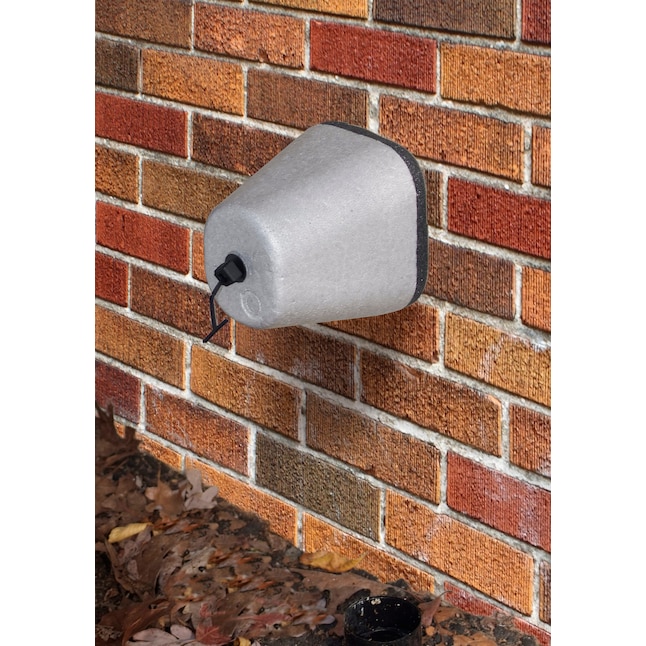
Also you’ll notice the soil in this picture is above the sill plate lol.
I ended up seeing them for sale at Home Depot, and I have decided to purchase one and do some testing to show how stupid they are. But before they do, let me explain the why they’re stupid.
2021 Texas Freeze
Everybody loves blaming the politicians for the freeze and subsequent electrical grid issues, maybe it’s because they have direct access to HAARP or maybe it’s their distinguished list of electrical engineering creds. But one thing is for sure: Texas got a ton of snow and also relies heavily on renewable energy (right? Not oil!)… Well, solar panels work poorly when they can’t “solar” and wind generators work poorly when they’re frozen in place.
Sadly, this scared a lot of people down here who aren’t used to it, and they didn’t have the thought to walk out to the curb and shut their water meter off (here’s a key I designed so you can do it yourself), so the PEX lines froze, cracked, and then thawed and people had massive amounts of water damage instead of the tiny amount that would be in the lines. Also, if a freeze without power is coming, crack your faucets — all of them. This allows the lower faucets to get rid of the water sitting in the system, and the higher faucets will give an entry point for air to allow the water to drain. Also x2: Disconnect your garden hoses.
Now, these people go out of their way to avoid scary cold weather. Before I do all the work of proving why these are stupid to buy, I’ll explain the why:
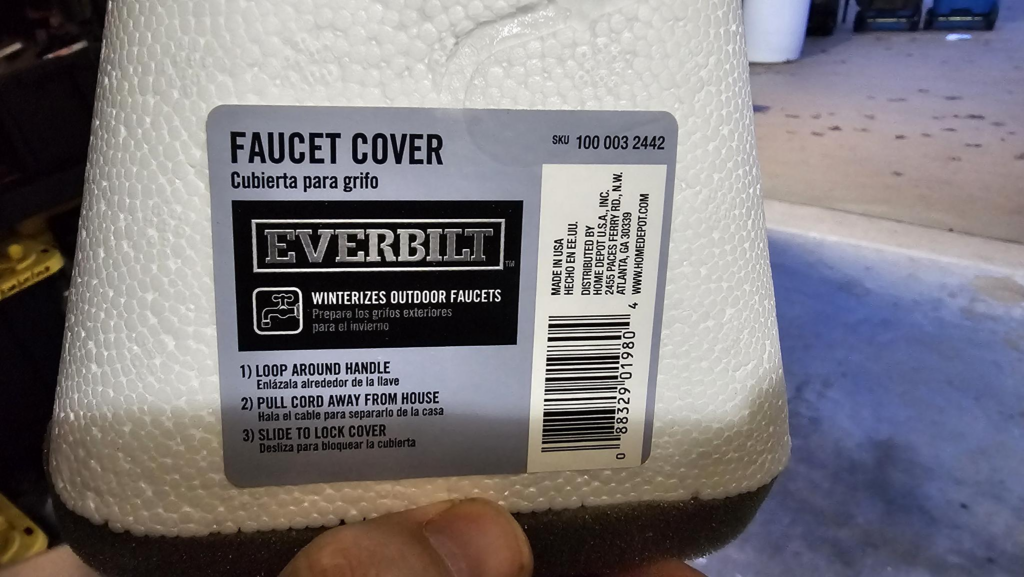
Insulation products always contain an “R” value. This is a thicc Styrofoam cup and there isn’t an R value in sight. That said, it’s a pretty damn clever design. There’s open cell foam on the bottom to adapt to brick walls, there’s a toggle and plastic gasket on the top to allow it to tightly attach to the spigot. I bought this one to test in my freezer.
My Hosebib, Sillcock, Spigot
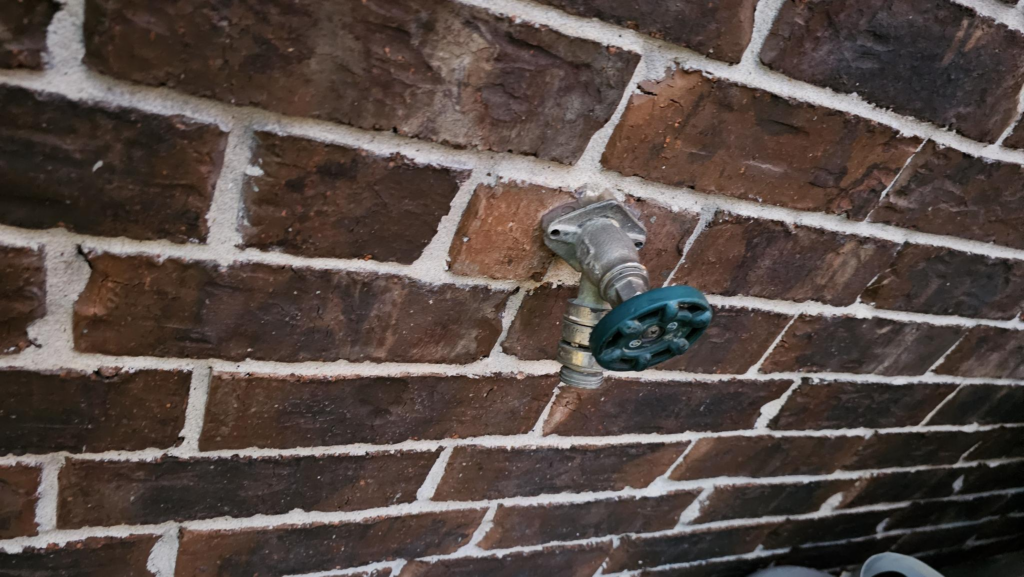
This right here should tell you exactly why these don’t make sense. This is on the side of my house. If you’re not seeing it right away, that’s okay, but look at the valve handle. Is it perpendicular to the wall? Yes. This is what every. single. house. in my neighborhood has.
What about this one?
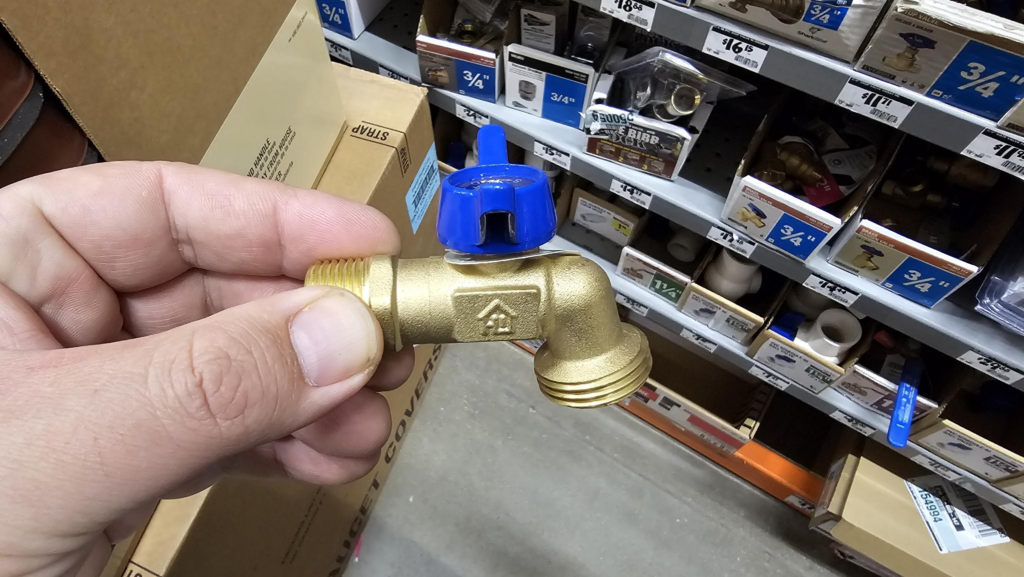
Okay, so that is parallel to the wall. So, either there’s some really weird gearing going on inside of there, or the valve (the actual part that turns on the water or off physically) is directly under the blue handle. Guess what, we can look!
Open, no shiny ball:
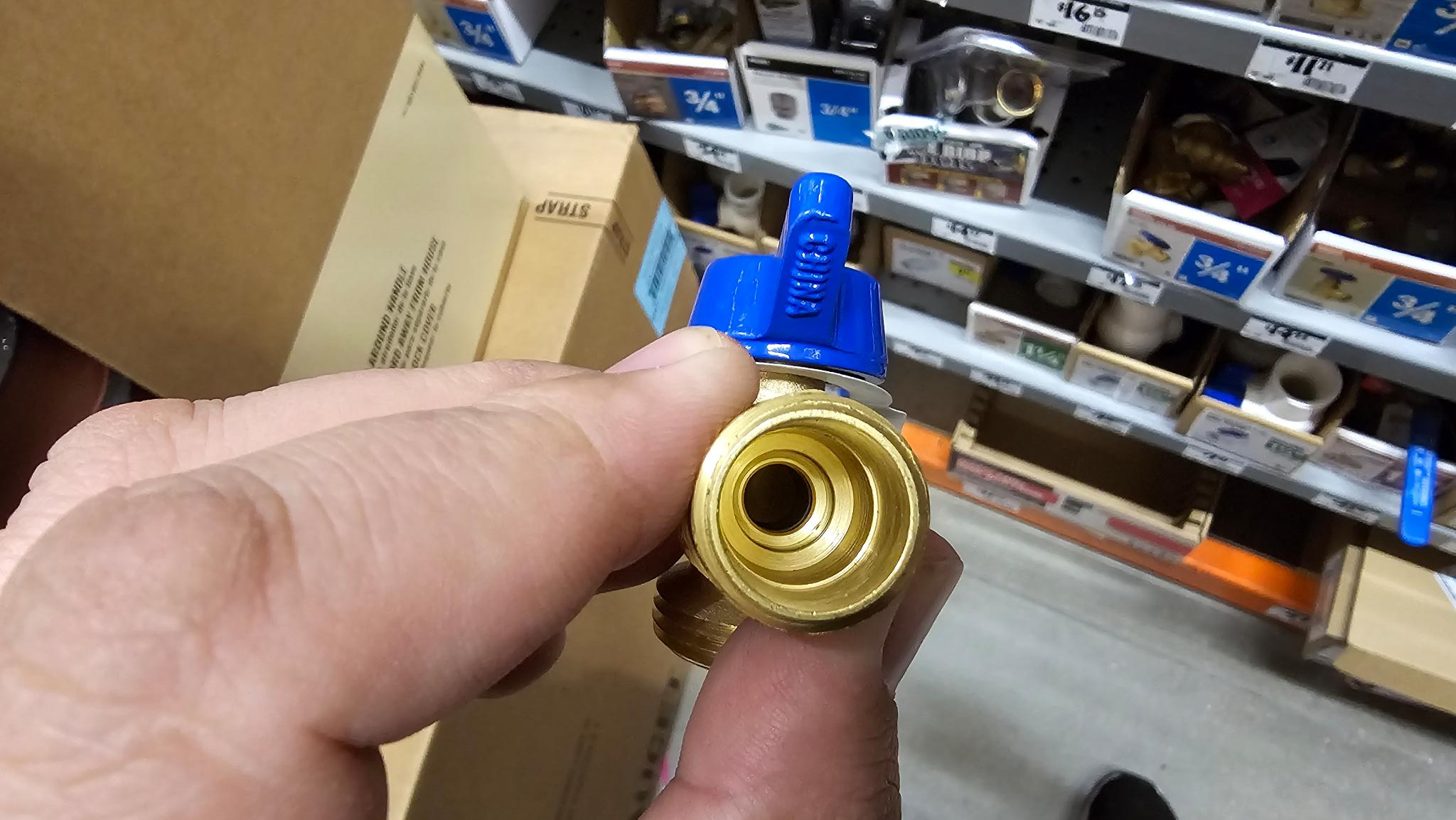
Closed, Shiny Ball:
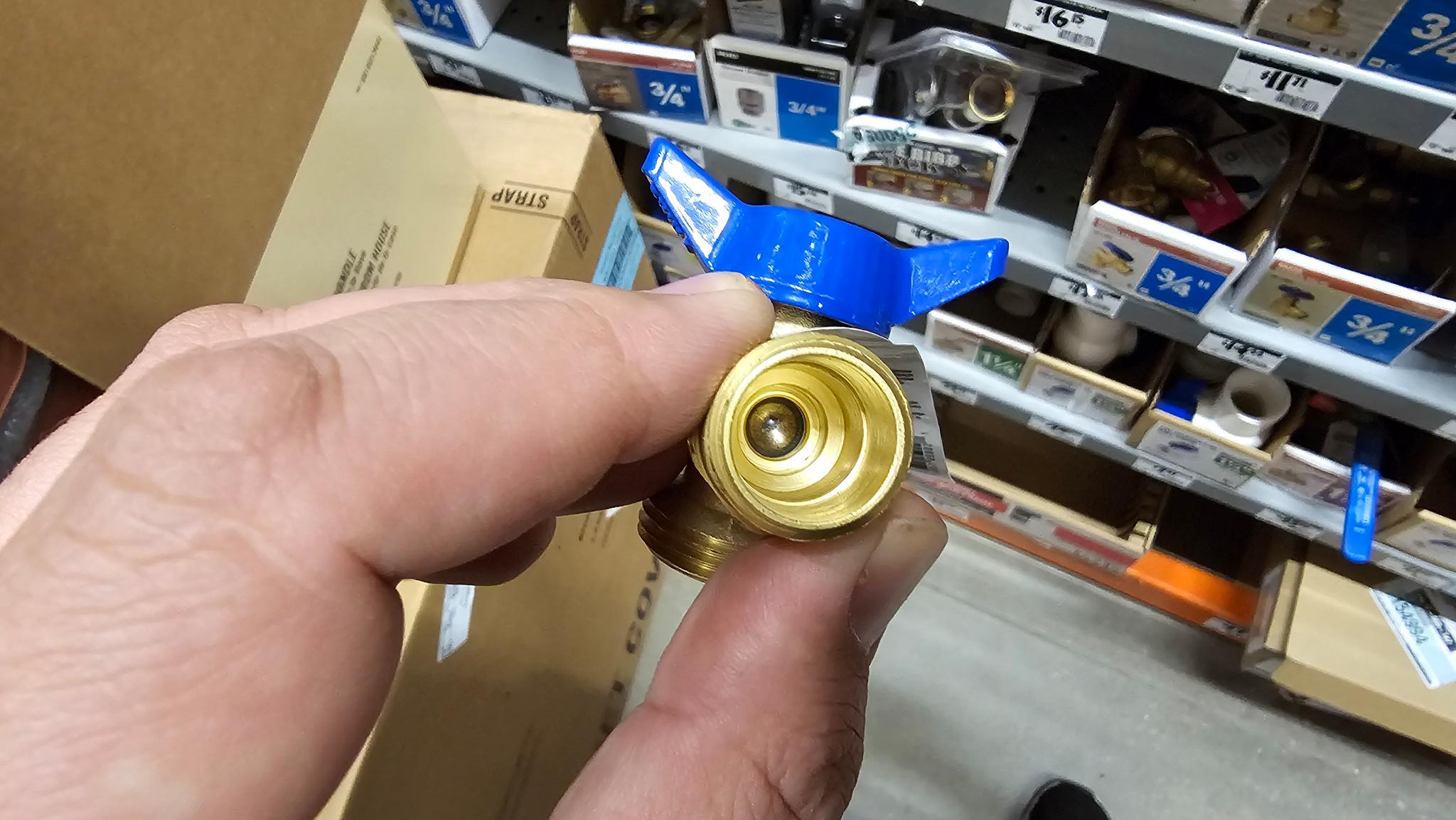
So what do we learn from this?
The water will be all the way up to the shiny ball — which admittedly is outside of the building (or container, etc) and exposed to cold temperatures. You should take steps to protect this, let it drip, drain the container, etc. These foam dummy caps aren’t helping you for much time.
What have we learned about the orientation of the valve? Likely, if you turn it, the actuating part of the mechanism is connected to the handle in a line. So if my valve is PERPINDICULAR to the building, then that means the valve is somewhere in the wall.
Enter “Frost Free Valves”:
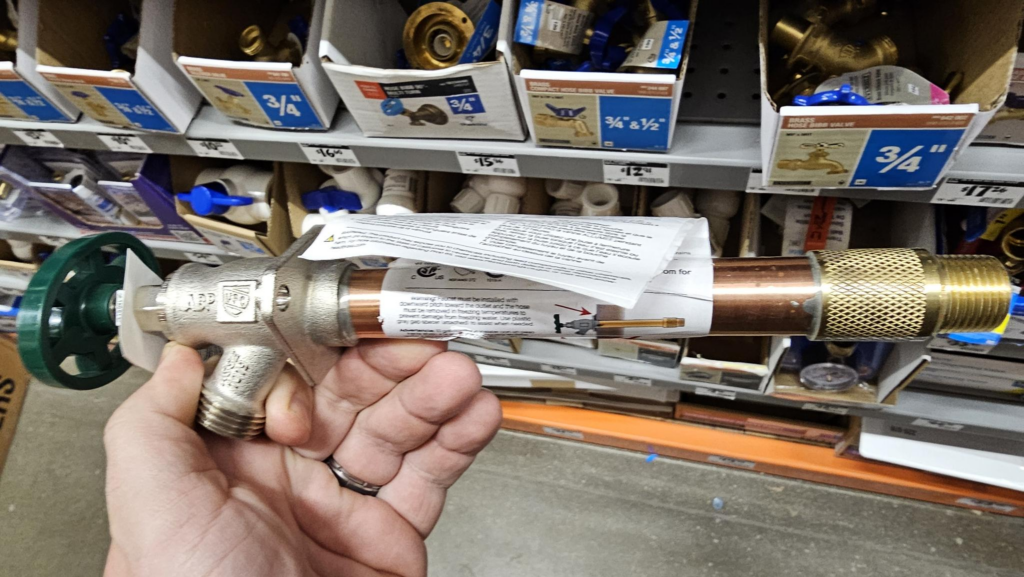
See that big ass pipe on the back? I didn’t add that — it is how the come. Let’s look at the naughty bits:
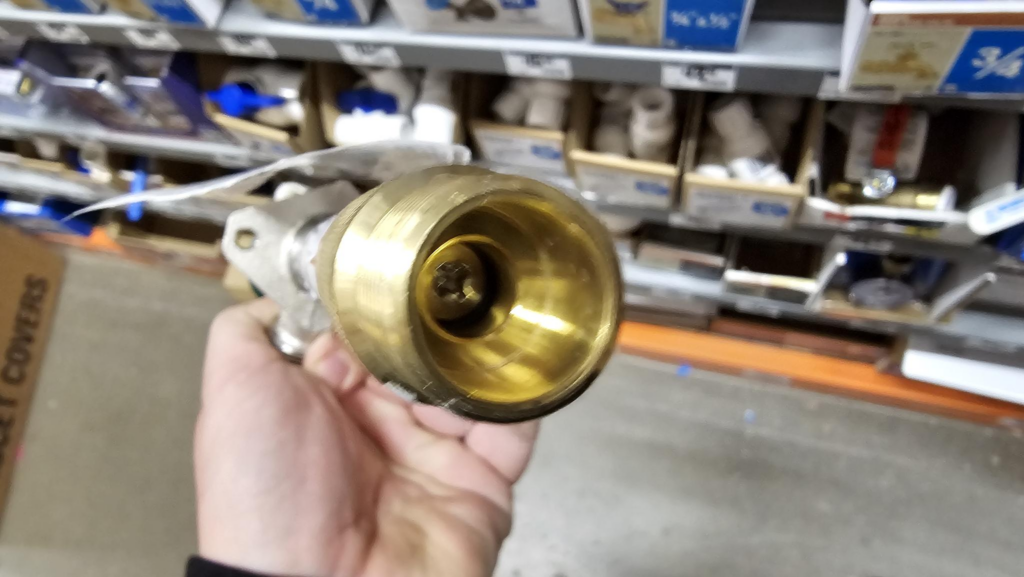
This photo was taken with a potato, but it is clear enough to see that the actuating body of the valve is inside that pipe.
This is important: This means that when you turn off your hose, the water stops several inches into the wall. Your walls are likely 4-8″ thick, so this valve will shut the water off effectively inside the wall (you know, where your little piggys are staying warm).
Can this freeze? Sure — wildly unlikely.
Next post about this I’ll do some testing with the dunce cap.
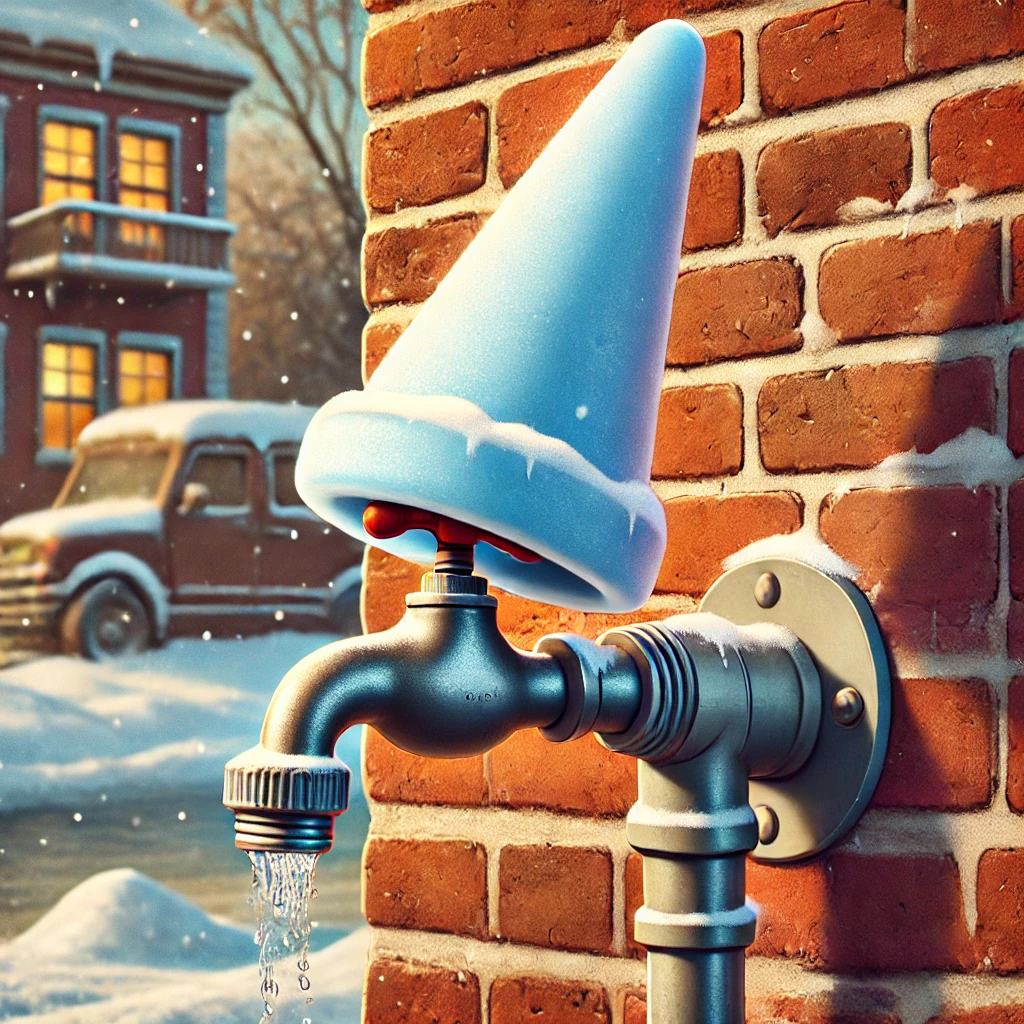
Leave a Reply